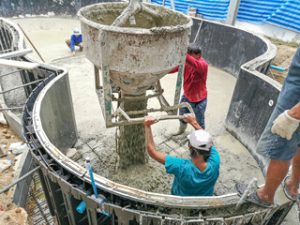Tree Service Irvine CA companies provide important services like trimming and pruning that keep trees healthy. They also help prevent structural failures that could threaten people or property.

When choosing a tree service, ask for referrals and a written estimate. Also, check the company’s credentials with a professional organization. A reputable tree service will have good online reviews and appear in professional publications.
When you have a dead or damaged tree, or one that is threatening to fall on your house, you will need the help of a professional tree service. These professionals specialize in removing trees and will use special equipment and safety precautions to prevent damage to homes, landscaping and utility lines. They will also know the local regulations regarding permitting, and will be able to handle the paperwork for you.
You should always ask for references and check online reviews before selecting a tree service. A reputable company will have plenty of positive feedback on local forums, discussion groups and social media sites. Look for a website that has a contact form or live chat support, as this can be another indicator of customer satisfaction.
A reputable tree service will not perform practices that go against industry standards. These include tree topping, lion’s tailing, and climbing spikes, which are all considered unsafe and can actually injure or kill your tree. Ask about the safety equipment used by the tree service, and make sure that it is OSHA compliant. Also, verify that the company carries liability insurance and workers’ compensation coverage. This will protect you in the event of an accident or injury.
The cost of tree removal can vary significantly, depending on the size and condition of the tree, its location, and the extent of the work required to remove it. The best way to determine the cost is to get a quote from several different companies and compare prices. It is important to note that while a lower price may seem tempting, if it is too good to be true, it probably is.
Once you have selected a tree service, make sure that all payments and deposits are made with a credit card. This will provide you with some protection in case the company does not complete the work or goes out of business. Also, never make a large payment upfront, and instead stagger payments according to work stages. The BBB recommends that you pay only when you are 100% satisfied with the completed work.
Stump Grinding
Stump grinding involves using a machine that shaves the stump into wood chips, which can then be used as mulch or buried in the ground. It is far less invasive than digging up a stump with a tractor or shovel, and it can also be done quickly and inexpensively. Stump grinding can be performed on any type of tree stump, including those from pines, spruce, oaks, and maples. Some stumps are easier to grind than others, however, depending on their age and the size of their root system.
Stumps can be a nuisance, causing damage to lawns and driveways and creating trip hazards for residents and visitors to the home. They are also prone to attracting pests, including termites and ants. Stumps that are left to rot can also be unsightly, especially in a yard with other trees. There are several ways to remove a tree stump, but the best option is to hire a professional service to perform stump grinding.
Professional stump grinding services use a special machine to shave the surface of the stump and roots, leaving wood chips in their place. This is a safe and easy way to remove the stump, preventing future problems from obstructing lawns or driveways. Stump grinding can also be used for landscaping purposes, enabling homeowners to plant flowers and shrubs around the stump, without having to deal with an unsightly or dangerous obtrusion.
The service provider will typically have a variety of sizes of stump grinders available, allowing them to handle any size stump. They will also be able to adjust the grinding depth to suit the needs of the client. This can be done to expose more of the root system or to leave the stump a few inches below ground level, which is important for promoting healthy grass growth.
Tree Trimming
Tree services are essential to the health of your property. They add curb appeal, provide shade, and help prevent soil erosion. They also help to reduce energy costs by preventing direct sunlight from reaching the building. A professional Tree Service can assess your property and recommend the best solutions. They can perform bush trimming, lot clearing, cleanups, tree removal and pruning, and stump grinding. They can also help you to plant new trees on your property.
Tree trimming is a common but important service that helps maintain the health of your trees. It also improves the appearance of your property and ensures safety by removing dead or damaged branches. A professional can also prune your trees to shape them and increase their lifespan. However, you should not attempt to do this yourself as it requires the right knowledge and equipment.
You should choose a tree service that has a good reputation and years of experience in the industry. It should also have the necessary credentials and the correct insurance to protect its workers. If you hire a tree service company that does not have the right credentials, you run the risk of being held liable for any injuries or damage to your property.
A good tree service will have a team of professionals that are familiar with the local environment and can provide a quality job at an affordable price. They will also take the time to listen to their clients’ concerns and answer any questions they may have. They will also perform an inspection before starting work to determine if the trees are in good condition.
Tree Inspection
Just like your car, house or teeth, trees need routine inspections to keep them healthy and safe. Tree service professionals offer a range of inspection services that include health assessments, risk assessment, pruning and trimming, stump removal and emergency response. These services contribute to the well-being of urban forest ecosystems and significantly improve property safety and environmental sustainability.
Arborists conduct health assessments by examining the entire tree, including the roots, bark, branches and crown. These experts look for signs of disease or rot, such as slowed growth or discolored leaves, as well as pest infestation and other issues that could affect the health of your tree. Performing regular inspections allows you to address any concerns before they become more serious and save you money in the long run.
A thorough tree inspection can help identify physical damage caused by construction, storms or incorrect pruning. It can also spot problems with the tree’s structure that may make it more likely to fall, posing a hazard to pedestrians and vehicles. The expert tree service company will then provide the necessary treatments to prevent further damage.
A professional will also examine the soil around your trees to determine whether it is providing adequate nutrients and drainage. The soil is important to the overall health of your trees and can impact their appearance, growth and lifespan. If the soil is inadequate, it can cause root rot and other serious problems that will affect the health of your trees.
Another important reason to get a regular tree inspection is that it can spot any signs of potential problems, such as rot, insect infestation, disease, and structural weakness. When these issues are identified early, they can be addressed before they turn into major problems that pose a threat to the public.
In addition to trimming and pruning, tree service companies also provide pest control and other treatments. For instance, they can exterminate invasive species, such as the spruce budworm and pine beetle, without harming the surrounding vegetation or nearby structures. This helps prevent these pests from spreading to other trees on the property and causing further damage.








